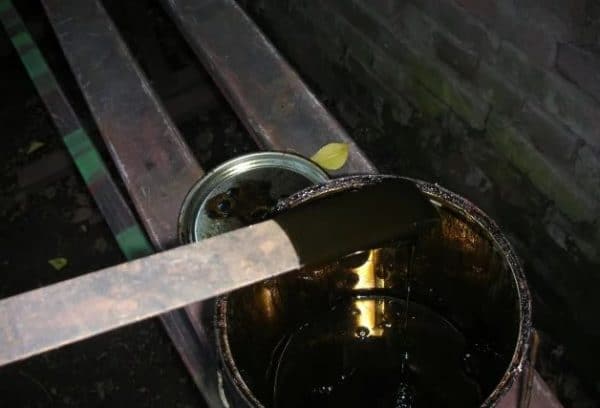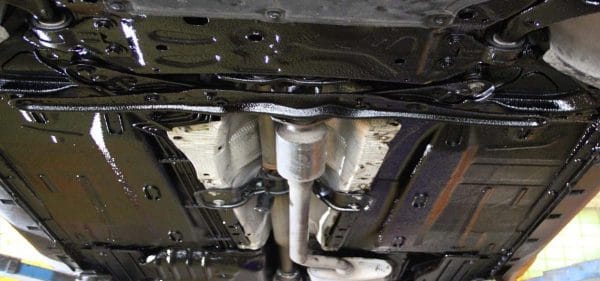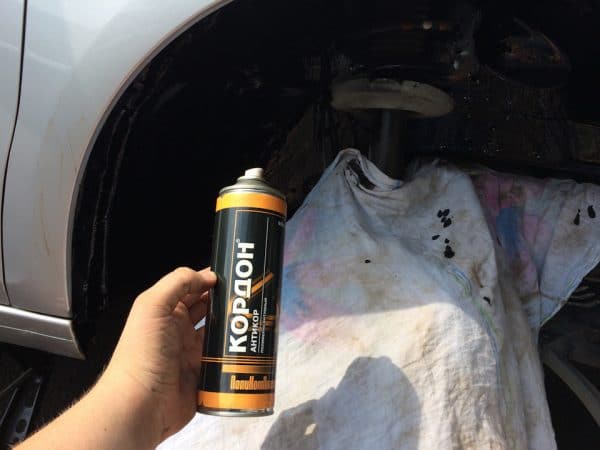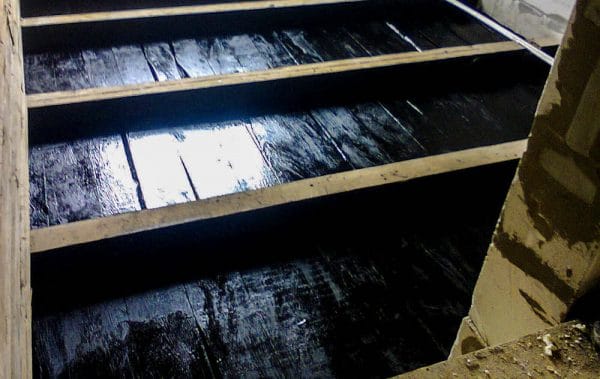To protect the metal from rust, specialized compounds are used - anticorrosive. They help to remove existing defects and prevent the appearance of new ones. Among car owners, Cordon is a popular anticorrosive agent in the form of mastic based on rubber and petroleum products.
- Properties and composition
- The benefits of anticorrosive
- Instructions for use
- Application Features
- Application in construction and other fields
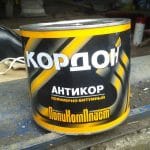
Properties and composition
Anticorrosive protective agent “Cordon” is realized in different forms - cans of 1 kg and 2.3 kg, aerosol cans of 520 ml and 650 ml, euro-cans of 1000 ml. The composition of anticorrosive is represented by such components:
- polymers;
- bitumen;
- rust converters;
- corrosion inhibitors;
- synthetic rubber;
- fine fillers;
- plasticizers;
- organic solvents.
Cordon is an effective and high-quality material for protecting metal from corrosion. It is designed to handle external parts and hidden cavities of the car, as well as for noise protection of the bottom and wheel arches. As the composition dries, a black coating forms like a wax, impervious to moisture and having a high degree of adhesion with various coatings. The tool can be applied to factory coatings. It has excellent elasticity, does not deteriorate from vibration, withstands temperature extremes ranging from -50 to +100 degrees.
Technical characteristics of the composition:
- appearance - black ointment mass;
- consumption - 0.78-1 kg / sq. m;
- adhesion - 1 point;
- fraction of solids - 65–70%;
- the degree of milling - 70-100 microns;
- impact strength - 50 kgf / cm;
- conditional viscosity - 60–150 s (according to the device VZ-246).
The benefits of anticorrosive
"Cordon" is highly effective in working against rust. It is waterproof, makes the surface airtight, so corrosion stops its development. The tool can be called heat-resistant, as it easily tolerates both cold and heating up to +100 degrees and can be used in any climate.
Antikor "Cordon" is universal - with its help it is possible to protect a car body, any metal products and designs from damage. Also, the product is allowed to be applied on wooden surfaces or used on other bases to protect it from moisture and with the purpose of sound insulation.
“Cordon” is easily applied on surfaces that have not undergone preliminary preparation, and on parts previously treated with another anticorrosive. The composition is ideally combined with coatings, other protective and decorative coatings, the degree of adhesion does not decrease under any weather conditions. The wax-like layer cannot be washed off even when using cleaning products.
to contents ↑Instructions for use
Before using anticorrosive, the surface must be degreased, cleaned of all contaminants, remove peeling coatings. Immediately before application, the base must be well dried. If the composition is purchased in a metal container, it must be applied with a brush or roller. With high density, the product is diluted with solvent, gasoline, white spirit. The optimum temperature during work is not lower than +15 degrees.
Application Recommendations:
- the first layer is the base, it must be thoroughly dried for 4-6 hours, at least;
- forced drying is not recommended because the composition is flammable;
- 2-3 layers should be done with intermediate drying at 1 hour;
- upon completion of work, the coating must be left for a day, and only then start operation;
- during the final drying, it is important to avoid drafts, sharp temperature drops;
- if required, after drying, the coating can be repeated (usually this happens when the layer thickness has not reached a value of 1 mm).
Before use, the aerosol can must be shaken vigorously for 2 minutes, then spray the composition by pressing the valve head. The Euroball must be shaken and attached to the gun, set the pressure to 3–6 bar, spray the composition to the surface from a distance of 20–30 cm. Perform 2–3 layers with intermediate drying in 60 minutes. When working, do not smoke near the bottle and allow contact with an open flame, heating devices, static electricity.
to contents ↑With the anticorrosive cordon, you should work in rubber gloves in the open air or in an actively ventilated area, since it contains substances that are harmful to health. After processing, the tools must be washed with solvents. The rest of the product can be stored in a tightly closed container at a temperature of +10 to +50 degrees.
Application Features
Instead of adding solvent to dilute the anticorrosive, you can slightly warm up the composition. To avoid fire, do this in a water bath. If ignition does occur, you need to let the top layer, which has a green tint, burn out, and the process stops. If necessary, a wet rag can be thrown onto the surface of the composition in order to stop the access of oxygen. Ignition will not affect the quality of the coating, and then the composition can be used as intended.
Other tips for working with the anticorrosive "Cordon":
- After the final drying of the coating, carefully examine its surface. Sometimes cracks appear on it due to the difference in temperature between the composition and the environment during application. To eliminate such defects, you need to buy a car sealant (any, but not anaerobic), repair the cracks, leave to dry for a day.
- It is not recommended to apply a spray gun for applying the composition. This seriously increases consumption, and it is also likely to get uneven in the thickness of the layer.
- If the composition is viscous, it can be applied with a spatula - this processing option is quite acceptable. Nevertheless, with a high density of anticorrosive, it is worth warming it up a bit during operation.
- When the composition is completely dry, its appearance resembles molten glass with a characteristic sheen. If the coating looks different, this indicates a lack of complete polymerization and the need for drying.
- To enhance the effect of noise isolation, masters advise adding a small amount of crumb rubber to the Cordon. Typically, this technique is used to treat external surfaces.
- To wash off the anticorrosive, you can use an organic solvent, preferably white spirit or acetone.
Application in construction and other fields
Despite the fact that the Cordon mastic is intended for processing a car body against rust, it is widely used for other purposes:
- creating hydrophobic coatings on metal structures, structures made of wood, concrete, including those working when buried in the ground (layer up to 1 mm);
- protection of concrete supports, foundations, walls, which are subject to regular exposure to moisture (layer up to 0.4-0.7 mm);
- anticorrosive coating of pipelines, tanks and other metal products (layer up to 1.5 mm);
- renewal of old roofing materials as usual staining (layer up to 0.3 mm);
- sealing joints, joints of different designs (with a dense layer until the cracks are completely closed);
- priming the bases from brick, concrete, other building materials before finishing work, gluing floor slabs, parquet, applying insulation (with a thin layer when diluting “Cordon” to the state of ordinary paint).
Anticorrosive often cover garages, greenhouses, fences and roofs to protect them from rust and destruction from moisture. It helps to save a tree from rotting and is widely used in arranging a soft roof. Universality, usability and efficiency make the composition popular in industry, car repair and in everyday life.


